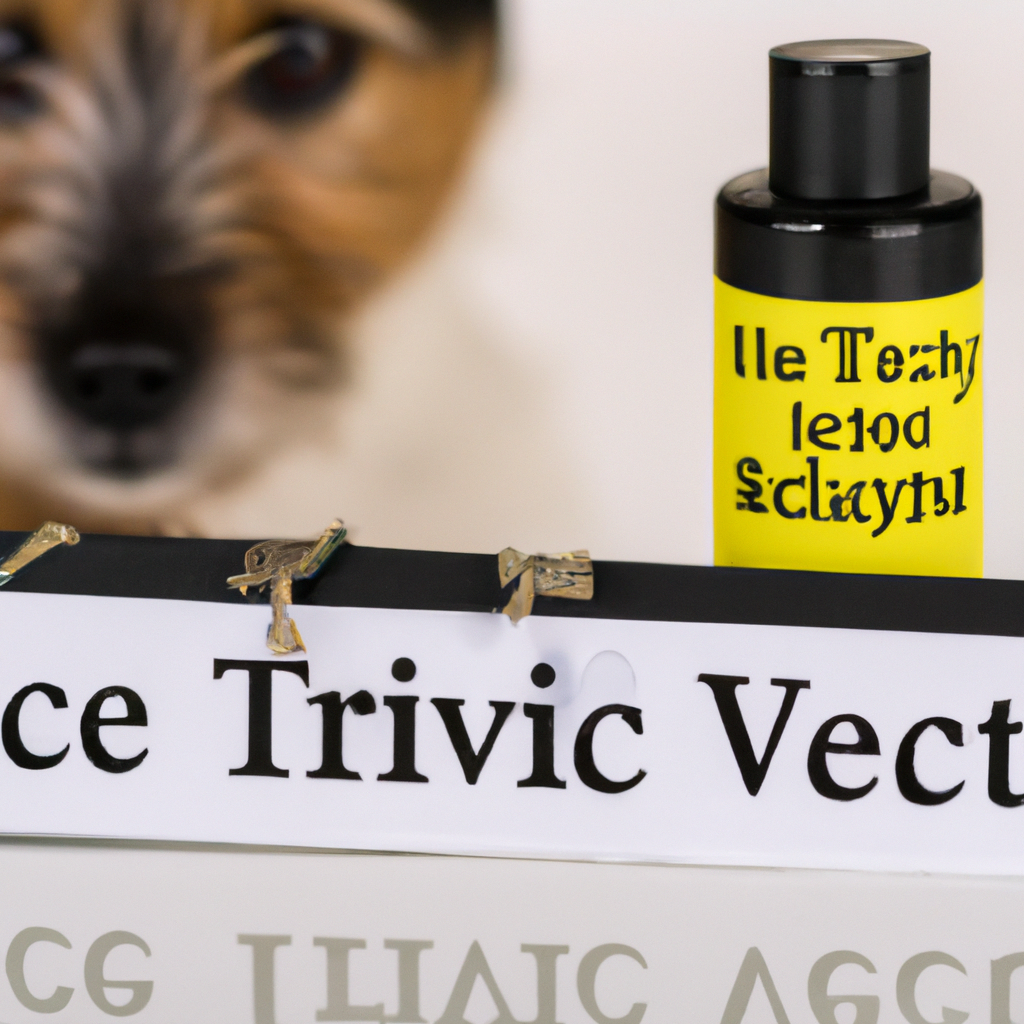Preventing and Treating Fleas and Ticks in Dogs
As the sun dances through the leaves, our furry friends frolic in the grass, blissfully unaware of the lurking

Unseen invaders lurking in the long grass, unseen intruders ready to pounce on our beloved canine companions. Fleas and ticks may be small, but they possess a mighty ability to wreak havoc on our dogs’ health and well-being. As responsible pet parents, it is our duty to take up arms in this epic battle, armed not with swords and shields, but with knowledge and preventive measures. In this article, we delve into the world of preventing and treating fleas and ticks in dogs, equipping you with the necessary insights to safeguard your loyal four-legged friends from these tiny assailants. So, let us embark on this enlightening journey together, for the love and protection of our ever-faithful companions.
Understanding the Flea and Tick Life Cycle: A Key Step towards Effective Prevention
Stages of the Flea Life Cycle:
Understanding the life cycle of fleas and ticks is crucial when it comes to effective prevention. By gaining insight into their development, we can tackle infestations head-on and safeguard our furry friends from these pesky parasites. Here, we break down the stages of the flea life cycle:
- Eggs: Flea eggs are as tiny as a grain of sand and are often laid on your pet’s fur or in their favorite resting spots. These eggs may even roll off onto carpets, upholstery, or cracks in the floor, making elimination challenging. With the right conditions of warmth and humidity, these eggs hatch within a few days.
- Larvae: Once the flea eggs hatch, they become larvae. These larvae tend to avoid light and thrive in dark, hidden areas like bedding, pet crates, or the base of your carpet. During this stage, they feed on flea dirt or organic debris, undergo molting, and grow larger over a period of one to two weeks.
- Pupae: As the larvae mature, they spin a cocoon and enter the pupal stage. During this mysterious period that can last for up to several months, the pupae are immobile and well-protected within their silky casings. It is important to note that even pesticides may have a limited effect on these resilient pupae, making thorough cleaning and treatment essential.
- Adults: Finally, adulthood arrives, and the fully developed fleas emerge from their cocoons in response to warmth, vibrations, or carbon dioxide, signaling the presence of a potential host. Once they find a suitable host, the fleas jump on and begin to feed, completing their life cycle.
Stages of the Tick Life Cycle:
Similar to fleas, understanding the life cycle of ticks is crucial for effective prevention. Ticks go through four stages in their life cycle, each requiring a blood meal to progress:
- Eggs: Female ticks lay hundreds to thousands of eggs at a time in a secluded area with dense vegetation. These eggs are usually small and dark-colored, making them hard to spot.
- Larvae: Once the eggs hatch, tick larvae emerge and eagerly wait for a small vertebrate host to latch onto, such as a mouse or bird. After feeding on the host’s blood, the larvae drop off and molt into the next stage.
- Nymphs: The nymph stage is the most challenging to detect and poses the greatest threat to both humans and animals. Nymphs attach to larger hosts, including dogs, cats, or humans, to consume their blood. Once engorged, they detach and molt into their final stage.
- Adults: Fully grown adult ticks seek out large mammals to feed on, including deer, dogs, or humans. It is during this stage that ticks are most commonly found and properly removed. After feeding, females lay eggs, and the cycle starts again.

The Importance of Regular Grooming and Inspection for Early Detection
Regular grooming and inspection can play a crucial role in maintaining your overall well-being and preventing potential health issues. By dedicating time to this essential routine, you not only ensure that you look and feel your best, but also enable early detection of any abnormalities that may require further attention.
When it comes to grooming, it is important to focus on both internal and external maintenance. Externally, make sure to regularly clean and groom your nails, hair, and skin. This not only helps in maintaining a polished appearance, but also prevents the buildup of dirt, bacteria, and oil that can lead to various skin and nail conditions. Additionally, investing in well-chosen grooming products such as shampoos and conditioners can help keep your hair and skin healthy and vibrant.
Apart from external care, internal inspection is equally important. Take the time to examine your body regularly for any signs of changes or irregularities. Prioritize key areas such as your scalp, face, and nails, as these can often provide early indications of potential health concerns. Look out for any unusual growths, changes in color, texture, or any other abnormalities. By being vigilant in your own self-checks, you can promptly identify and address any potential issues, allowing for early intervention and improved outcomes.
To ensure you don’t overlook any important detailing, try following a simple checklist during your grooming and inspection routine:
– Examine your scalp for any flaking, redness, or unusual lumps.
– Pay attention to your face, checking for any new moles, rashes, or changes in complexion.
– Inspect your nails, looking for signs of discoloration, brittleness, or thickening.
– Don’t forget to check your ears and nose for any unusual discharge or discomfort.
– Lastly, examine your body for any suspicious growths, concerning changes in skin texture, or unexplained pain.
Regular grooming and inspection is an investment in your overall health and well-being. By incorporating these practices into your routine, you empower yourself with the ability to detect and address potential issues at their earliest stages. Remember, prevention and early identification are key to maintaining a happy and healthy life.
Choosing the Right Flea and Tick Control Products for Your Dog
When it comes to our furry friends, keeping them safe and protected from pesky fleas and ticks is a top priority. With so many different products available on the market, choosing the right flea and tick control options for your dog can feel overwhelming. But fret not, we’re here to help simplify the process!
First and foremost, it’s important to consider your dog’s specific needs and lifestyle. Not all products work the same, and what may be effective for one dog may not be suitable for another. Here are some factors to keep in mind:
- Breed: Different dog breeds may have varying degrees of sensitivity to certain ingredients in flea and tick control products. Consult your veterinarian to ensure you choose a product that is safe for your dog’s breed.
- Age: Puppies and senior dogs may require different products or dosages compared to adult dogs. Always follow the age requirements specified on the product packaging.
- Lifestyle: Consider your dog’s daily activities. Does your pup spend a lot of time outdoors or in wooded areas? If so, you may need a more heavy-duty product to combat ticks that thrive in such environments.
- Medical conditions: If your dog has any underlying health conditions or is on medication, it’s crucial to consult your vet to ensure the flea and tick control products you choose will not interfere with their overall well-being.
By taking these factors into account and consulting with your veterinarian, you will be better equipped to select the right flea and tick control products that best suit your furry friend’s needs, providing them with the protection they deserve!

Creating a Pest-Free Environment: Tips and Tricks for Long-Term Protection
When it comes to keeping pesky critters at bay, prevention is key. By implementing a few simple strategies, you can create an environment that is unwelcoming to pests, ensuring long-term protection for your home and family. Here are some tried-and-true tips to help you achieve a pest-free haven:
- Seal It Up: Inspect your home for any cracks or holes that might serve as entry points for pests. Seal them off using caulk or weatherstripping to keep unwanted visitors out.
- Maintain Cleanliness: Pests are attracted to food sources, so be vigilant in keeping your surroundings clean and tidy. Regularly wipe down countertops, sweep floors, and store food in airtight containers to eliminate temptations.
- Eliminate Standing Water: Pests thrive in moist environments, so be sure to remove any stagnant water sources around your property. Keep gutters clean, fix leaky faucets, and consider investing in a dehumidifier for areas prone to dampness.
Invest in Quality Storage: Choose sturdy, pest-proof containers when storing items in basements, attics, or garages. Keep clutter to a minimum, as this can provide hiding places for pests. Consider using plastic bins with tight-fitting lids instead of cardboard boxes.
- Opt for Natural Pest Control: Instead of reaching for harmful pesticides, consider using natural alternatives to deter pests. Essential oils, such as lavender or peppermint, can be effective in repelling insects, while diatomaceous earth acts as a natural barrier against crawling pests.
- Maintain Outdoor Spaces: Regularly trim shrubs and trees, and keep a well-maintained garden. A clutter-free yard reduces hiding places for pests and makes it less likely for them to find their way into your home.
- Consult a Professional: If you’ve tried various methods but still face persistent pest problems, it may be time to seek help from a professional pest control service. They have the expertise to tackle the issue and provide long-term solutions tailored to your specific needs.
By implementing these tips and tricks, you can transform your surroundings into a pest-free oasis. Remember, it’s always better to prevent the problem than to deal with it once it arises. With some proactive measures and a little bit of creativity, you’ll be well on your way to a home that remains uninviting to unwanted guests.
In Conclusion
As we wrap up this journey into the world of preventing and treating fleas and ticks in our beloved furry friends, it is crucial to remember that our responsibilities as dog owners extend beyond providing food and shelter. These tiny pests can cause discomfort, pain, and even severe health issues for our dogs if left unchecked.
By staying vigilant and implementing preventive measures, such as regular grooming, thorough inspections, and utilizing effective products, we can protect our four-legged companions from the lurking dangers of fleas and ticks. Remember, an ounce of prevention is worth a pound of cure.
Should your pooch find themselves playing host to these troublesome insects, there is an array of treatment options available to alleviate their discomfort and eradicate the infestation. From topical solutions and oral medications to shampoos and collars, tailoring the treatment to your dog’s needs is key.
However, always consult with your veterinarian before making any decisions regarding treatment. They are the best source of knowledge and guidance, ensuring you make informed choices for your furry friend’s well-being.
So, as you embark on this journey to safeguard your dog from the incessant itching and potential diseases brought by fleas and ticks, know that you are taking an important step towards providing them with a happy, healthy life. Stay vigilant. Stay informed. And let’s keep those pesky parasites at bay together!






